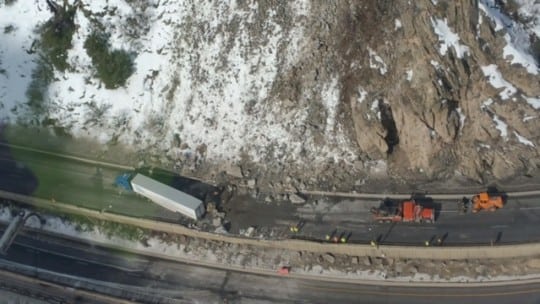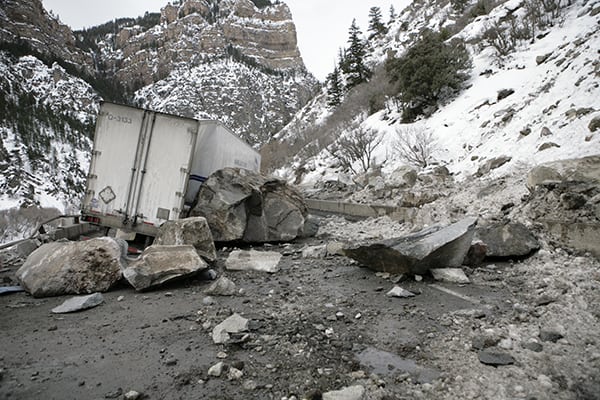

Media and public coordination have become more crucial to incident management. With the rise of social media and real-time traffic mapping on motorists’ smart devices, it is increasingly important for public information officers (PIOs) to be proactive in sending out incident and closure messages to the media and public as rapidly as possible.
While many readers likely will never need to react to the type of crisis described below, the principles discussed can apply to a wide variety of crises. These include having crisis procedures in advance, updating and practicing them regularly and keeping emergency information handy, including third-party contacts, media and influencers.
While I concede working in an area that is prone to the natural disasters described below raises the importance of crisis preparation for me, surveys show brands large and small lack plans for management of any kind of crisis (PRN, Mar. 28, 2016). They do so at their peril.
The Incident
On Monday, Feb. 15, 2016, a large rock fall event closed the main east/west transportation corridor through Colorado Interstate 70. The location of the slide occurred in an area notorious for such emergencies, Glenwood Canyon, a scenic, 17-mile stretch with cliffs towering 2,000 feet above the Colorado River.
Colorado Department of Transportation (CDOT) crews were able to flag traffic throughout the day; the rock fall incident occurred at 2:30 a.m. A secondary slide incident in the same location followed that night at 9:03, forcing CDOT to close the interstate totally in the interest of motorist safety.
There was a semi truck caught in the slide and disabled; fortunately no one was injured. With the help of State Patrol and local law enforcement, crews cleared any remaining semi trucks and passenger vehicles that were stuck in the canyon. At daylight, crews from CDOT’s geohazards team and maintenance staff initiated a unified command to evaluate the damage on the ground and via helicopter.
It took almost one week from the time of the initial slide for CDOT crews and contractors to perform rock scaling/stabilization. Once the debris was cleared, CDOT engineers began the process of evaluating the damage to the roadway surface. As a safety precaution, rock fall mitigation fencing was installed to protect crews on the ground.
As repairs progressed, CDOT reopened the interstate to one lane in each direction. Several weeks passed before the damage to the infrastructure was repaired and all four lanes of the interstate were open to regular traffic operations.
Internal Communications
When an event has the potential to close an interstate or highway for more than one hour, the protocol for the PIO is to gather details from the incident commander and the field team to produce a “hot topic” email to alert the customer service team and executive management team of the situation. This information is labeled as Internal Only and is used to inform the customer service team as it subsequently begins receiving motorist calls through the website.
Other tools that were used for internal communications included Google document sharing, a situation report and internal conference calls. The incident commander conducted these calls, prior to information being released publicly.

Source: Colorado Department of Transportation
Media Relations
Rock fall is a familiar topic to media outlets residing in mountain newsrooms. When media heard I-70 was going to be closed overnight, assignment desks were activated and alerted. By the next morning, media outlets in the Front Range area had mobilized to the east end of the canyon closure point. At this point the communications team’s plans were being deployed fully.
Stage Door: It’s important in an emergency plan to include preparations for a media staging area to be designated and created. Although safety remained the number one priority, once permission was granted from the geohazards team to move closer to the rock fall, the incident commander identified a staging area. Media members were then escorted to the rock fall area.
Call Me: It was decided to host a daily briefing call to accommodate media unable to mobilize to the scene. In addition, this provided relief to the PIO. Without the briefing, the PIO would have had to answer numerous phone calls, which was a challenge as the location of the rock fall had limited cellular coverage. A conference-call number that the communications team uses regularly was deployed. An email was sent alerting media about the briefing call.
Briefing Buddy: Another important component the PIO needs to manage is who will perform updates on the briefing calls. Our team utilized a member of the executive management team in the spokesperson role while the lead PIO provided details and other information. A subject-matter expert from the geohazards team often accompanied the PIO.
External Stakeholder Communications
It’s best to have your stakeholder database updated before an incident such as the one described here occurs. Our state agency utilizes Google and we compile city, county and local law enforcement and media contacts there.
The Google interface was useful, as the communications team was able to assist the PIO in the field from an offsite location not only with updates for stakeholders, but also to collaborate on press release content.
Social media platforms that were utilized included Facebook and Twitter. Having compelling video and photographs of the massive boulders in the debris field went a long way toward educating the traveling public on CDOT’s safety concerns and why the lengthy closure was in the interest of public safety.
It was a hardship to have I-70 closed for as long as it was, since the alternate route was far longer. The increased traffic that was being pushed onto the alternate route and through mountain towns that don’t usually see that heightened daily traffic was challenging. It was later discussed that increased signage on the alternate route could have been helpful.
Lessons Learned
- While many of our crew members were trained in the incident command structure, it was obvious that not everyone had the skill set or had been through an incident of this magnitude.
- We could have used additional coordination and training in heat-of-the-moment operations. The time to train, of course, is when you are not in the middle of an active emergency. Tabletop exercises can be utilized to practice the incident command structure.
- Owing to the nature of the event and its location, it’s important to remember who is affected. That’s where we decided to extend our outreach. For example, the state office of tourism was receiving a large volume of calls from constituents concerned about vacation plans being interrupted. Unfortunately, our team lacked an updated contact at the tourism office.
- Performing an after-action review (AAR) provides a platform for the team to discuss what went well and areas that could be improved.
CONTACT: [email protected]
Key Tools For Responding to an Emergency Incident
While the following are specific to emergency response work, they can be adapted to a variety of crises. In addition, brand communicators may have roles responding to physical crises.
Foster relationships and train. We train and build relationships with PIOs. Such groups can provide on-site assistance and monitor social media platforms during a crisis. Such assistance can be particularly useful to assist small communications teams during a crisis.
Have a Go Kit. For us its contents include: laptop, office supplies, mobile phone, extra batteries, printed contact lists, snacks and water, personal protective equipment (PPE).
Utilize a daily Situation Report (Sit Rep). We deploy a sit rep, but brand communicators also should document their actions. We’ve found sit reps designed as a Google doc make it easy for members of the team to edit during an event.
Note: For communicators who want to become familiar with incident command, FEMA offers a variety of independent study and hands-on training courses at: www.FEMA.gov
